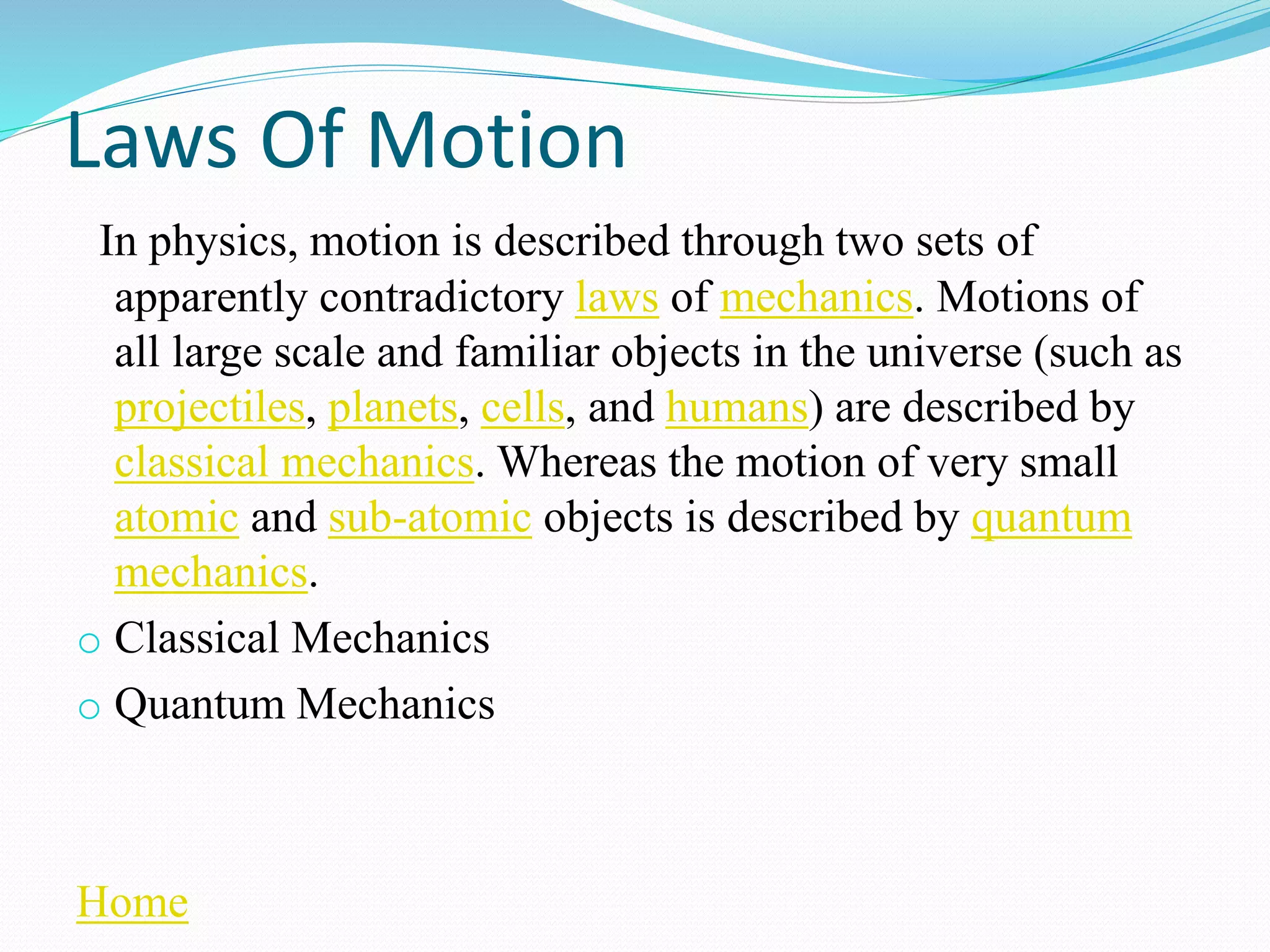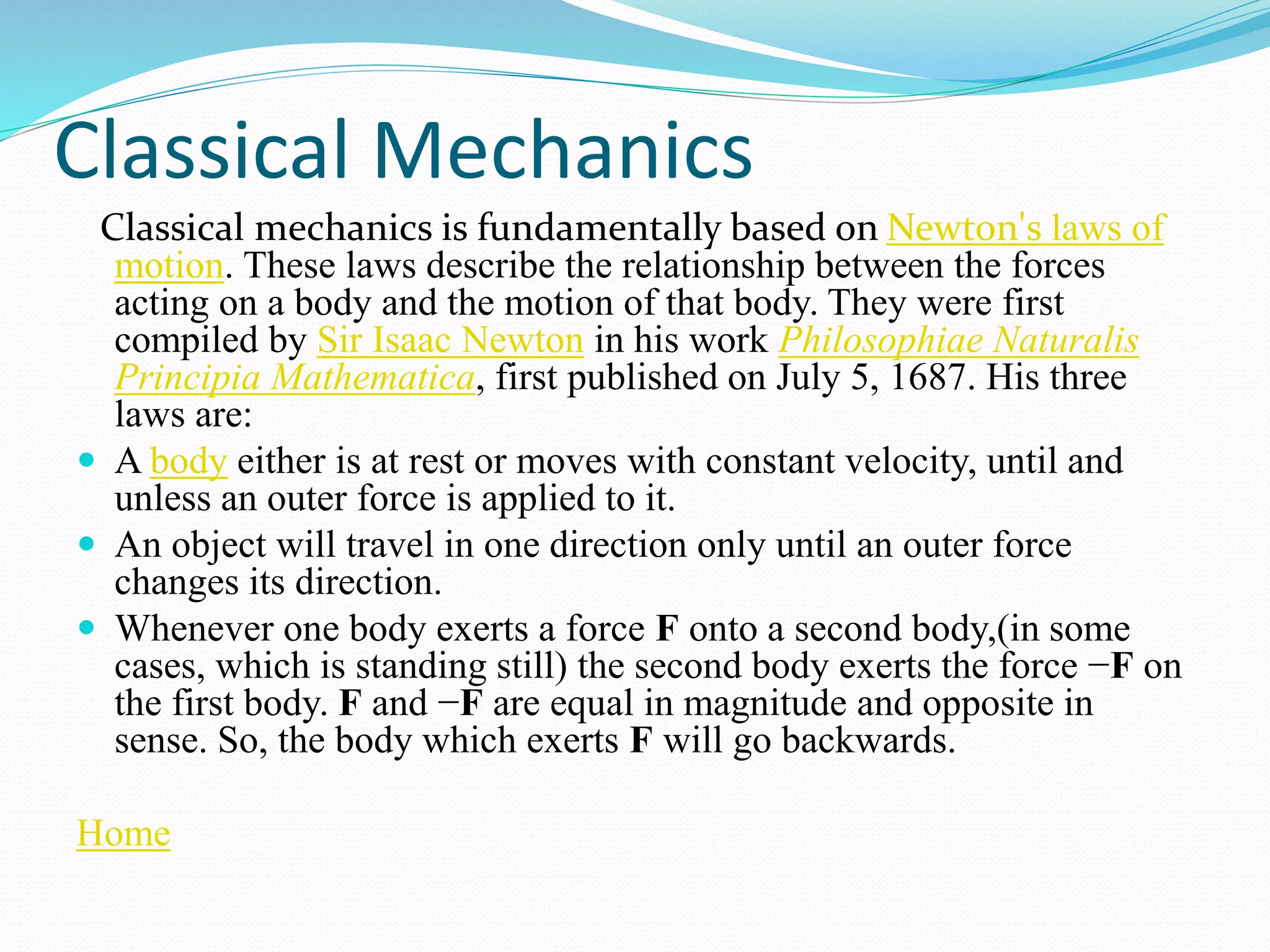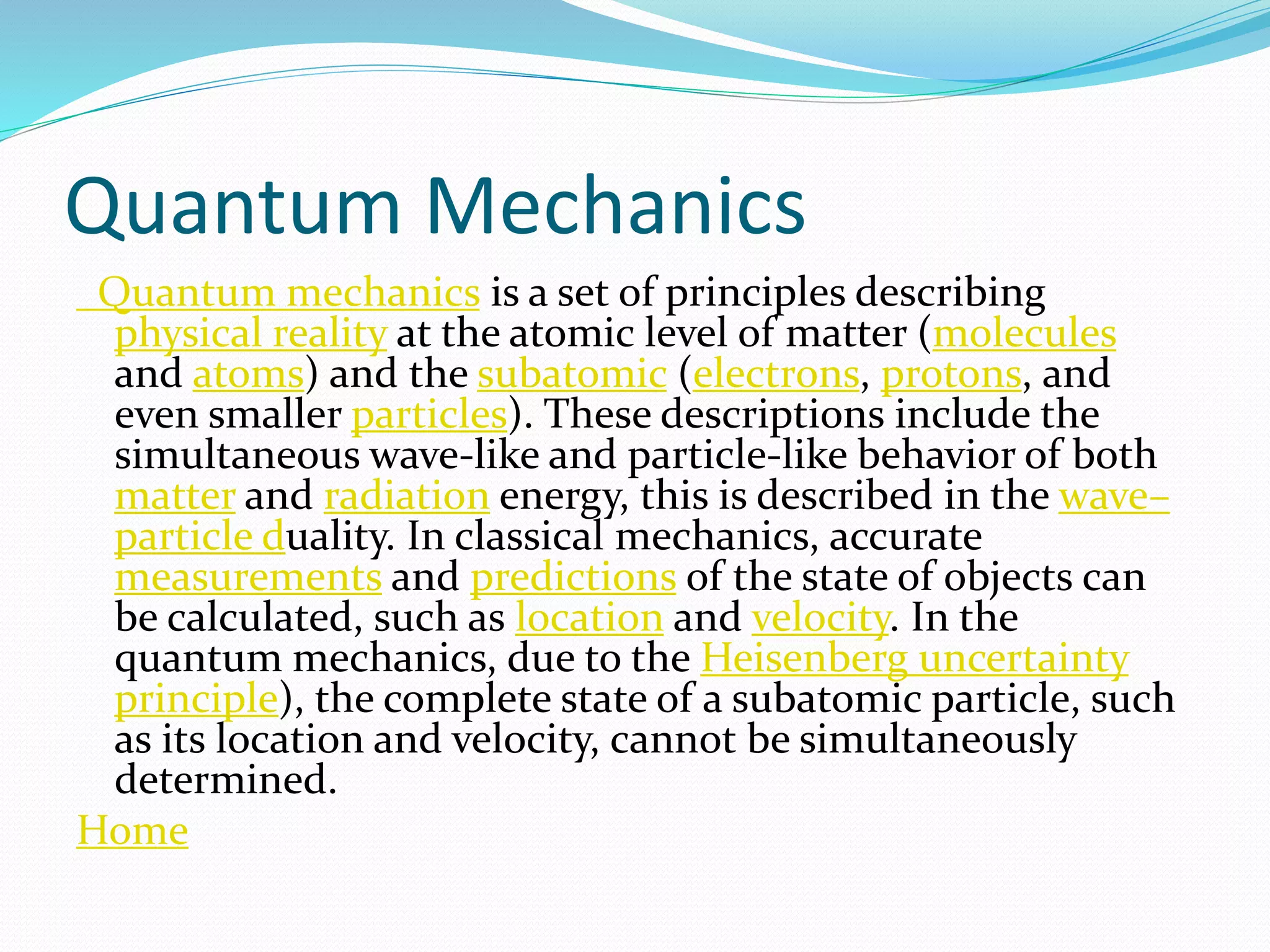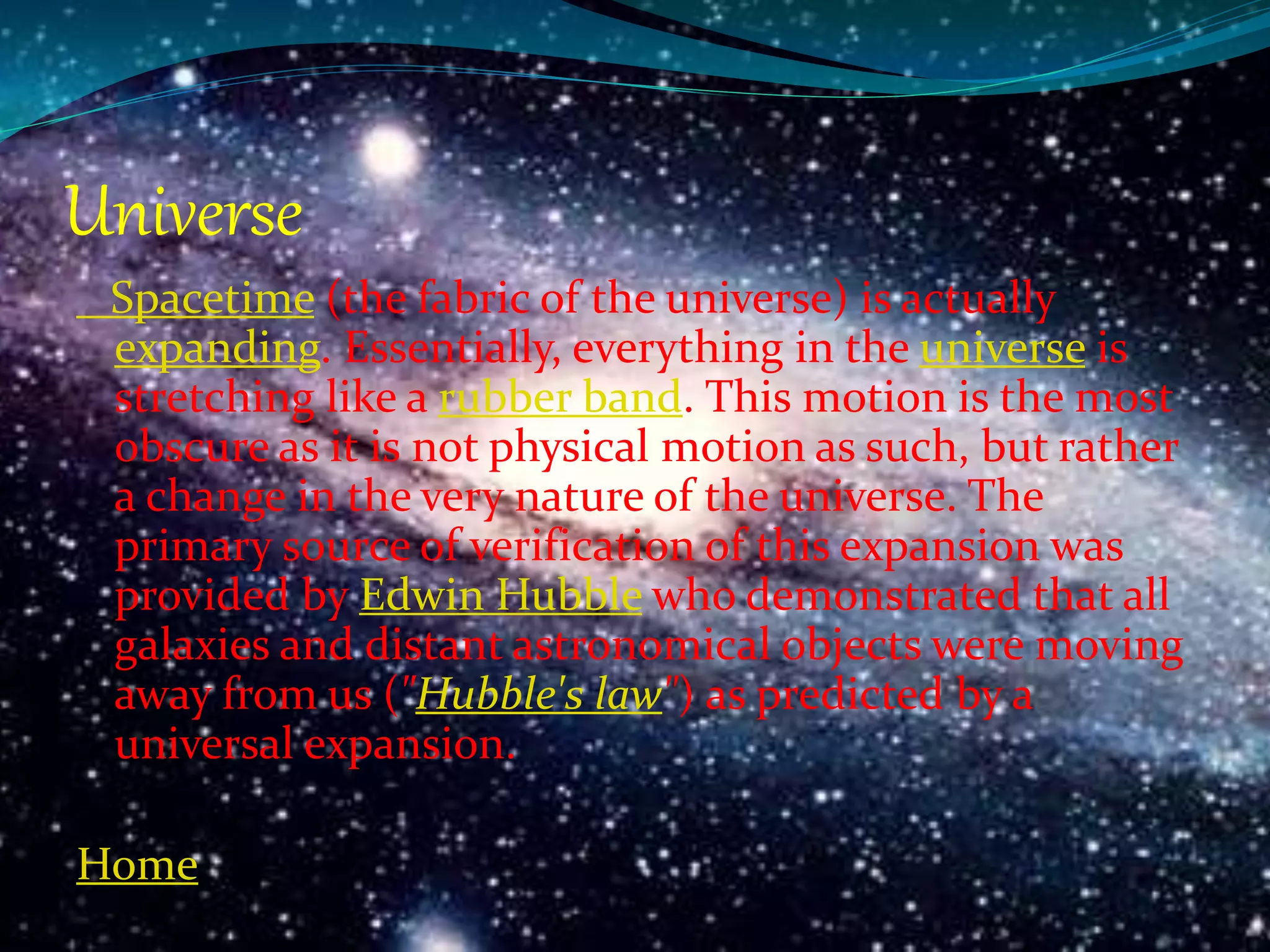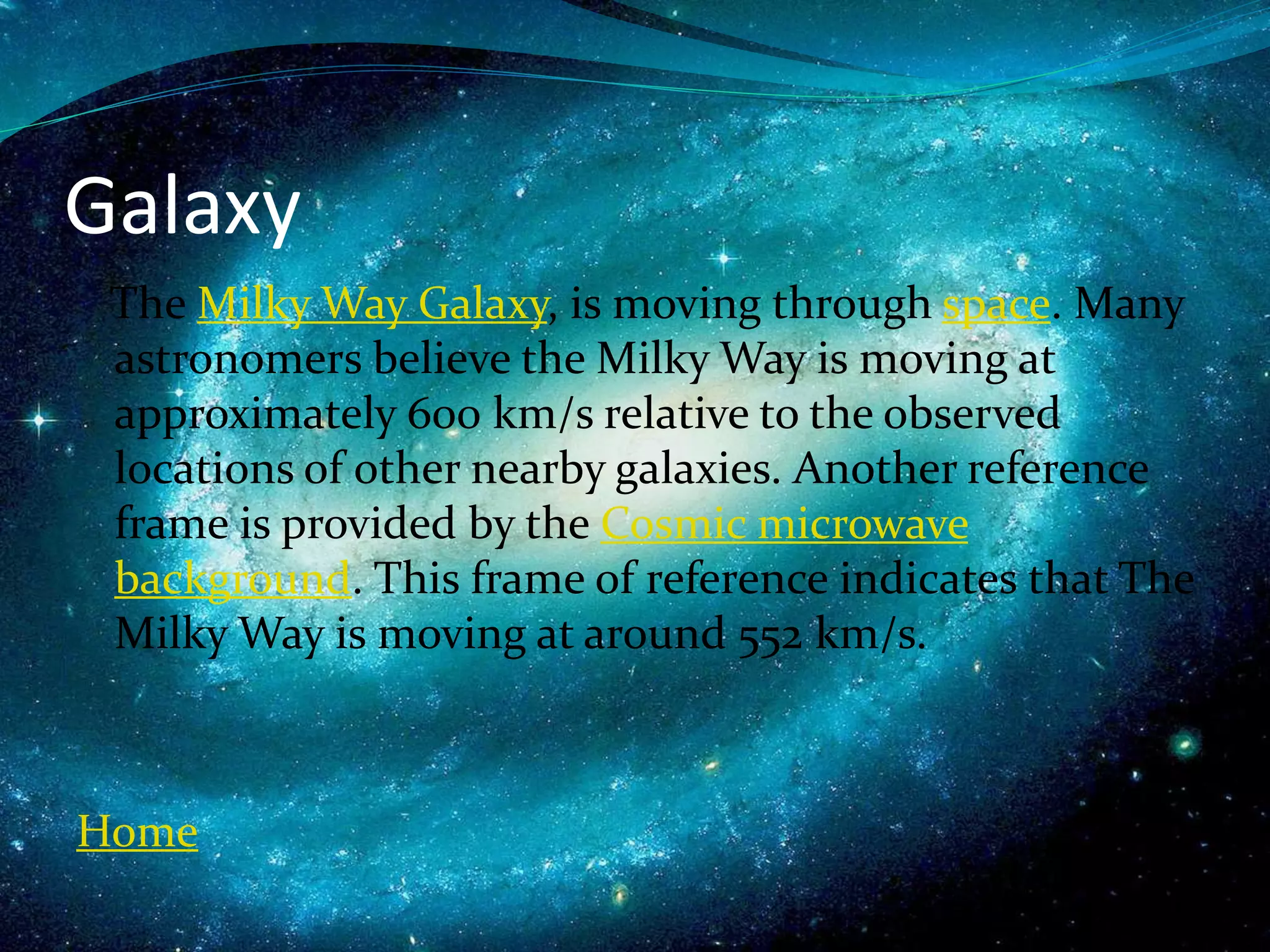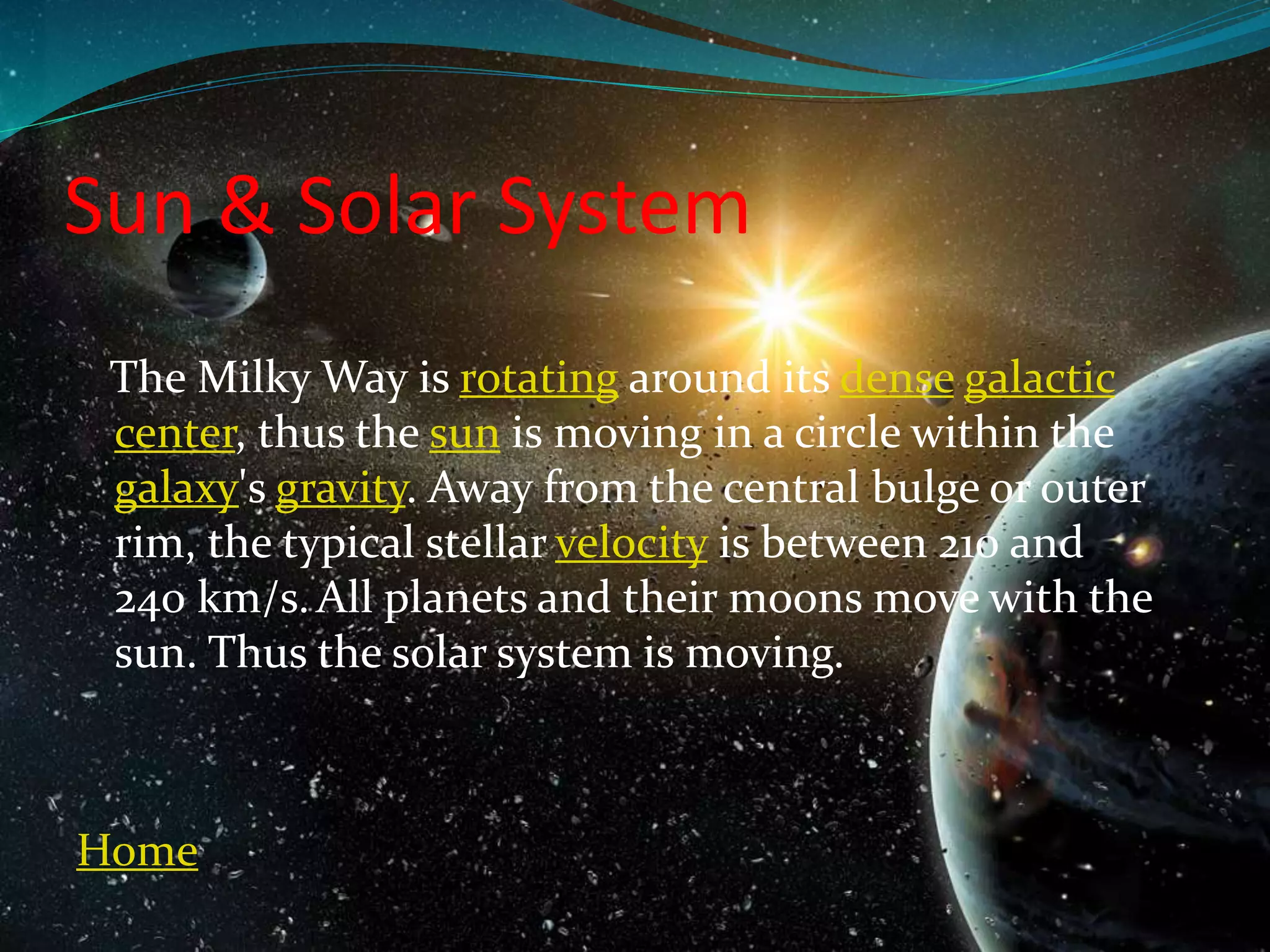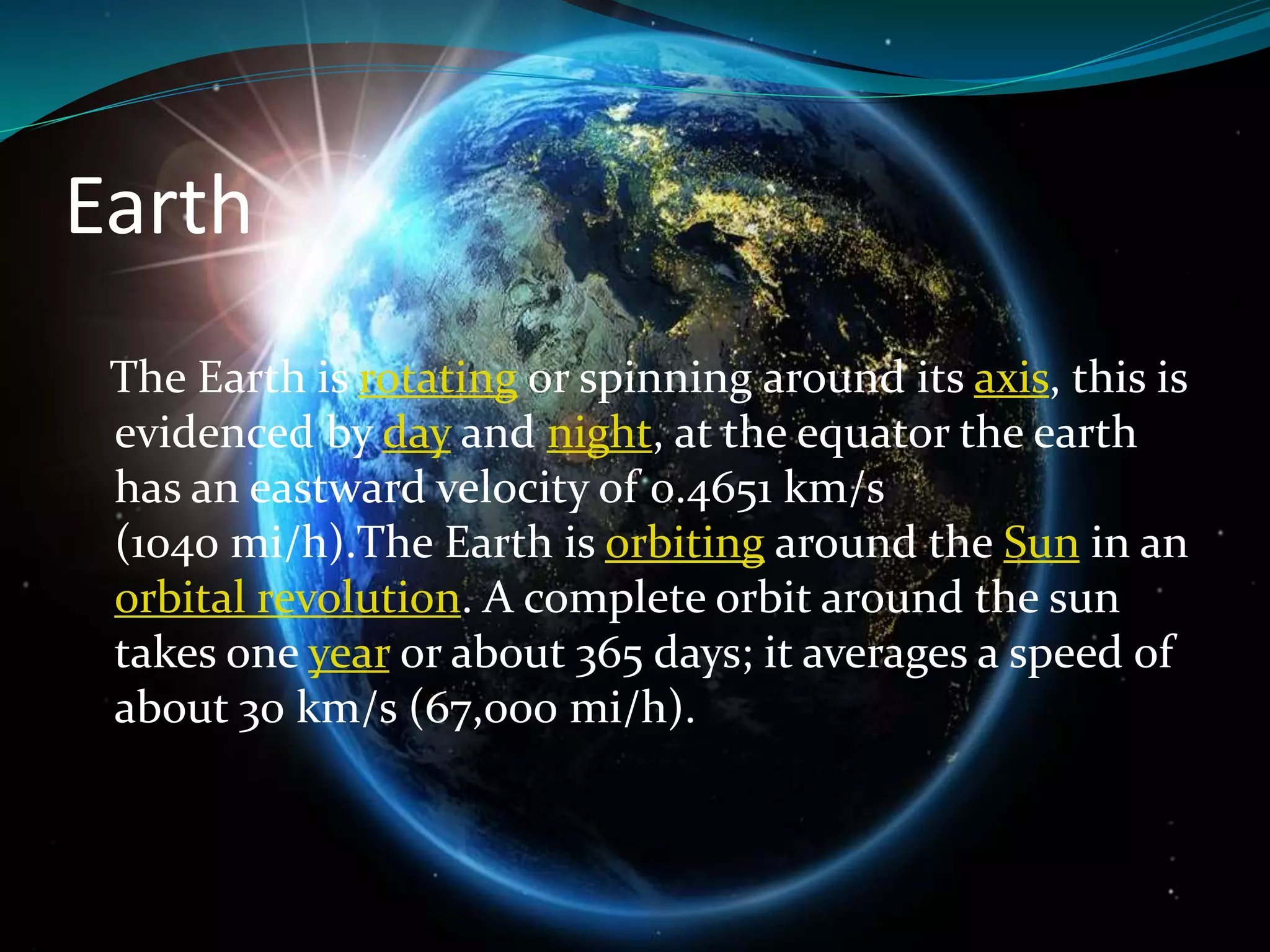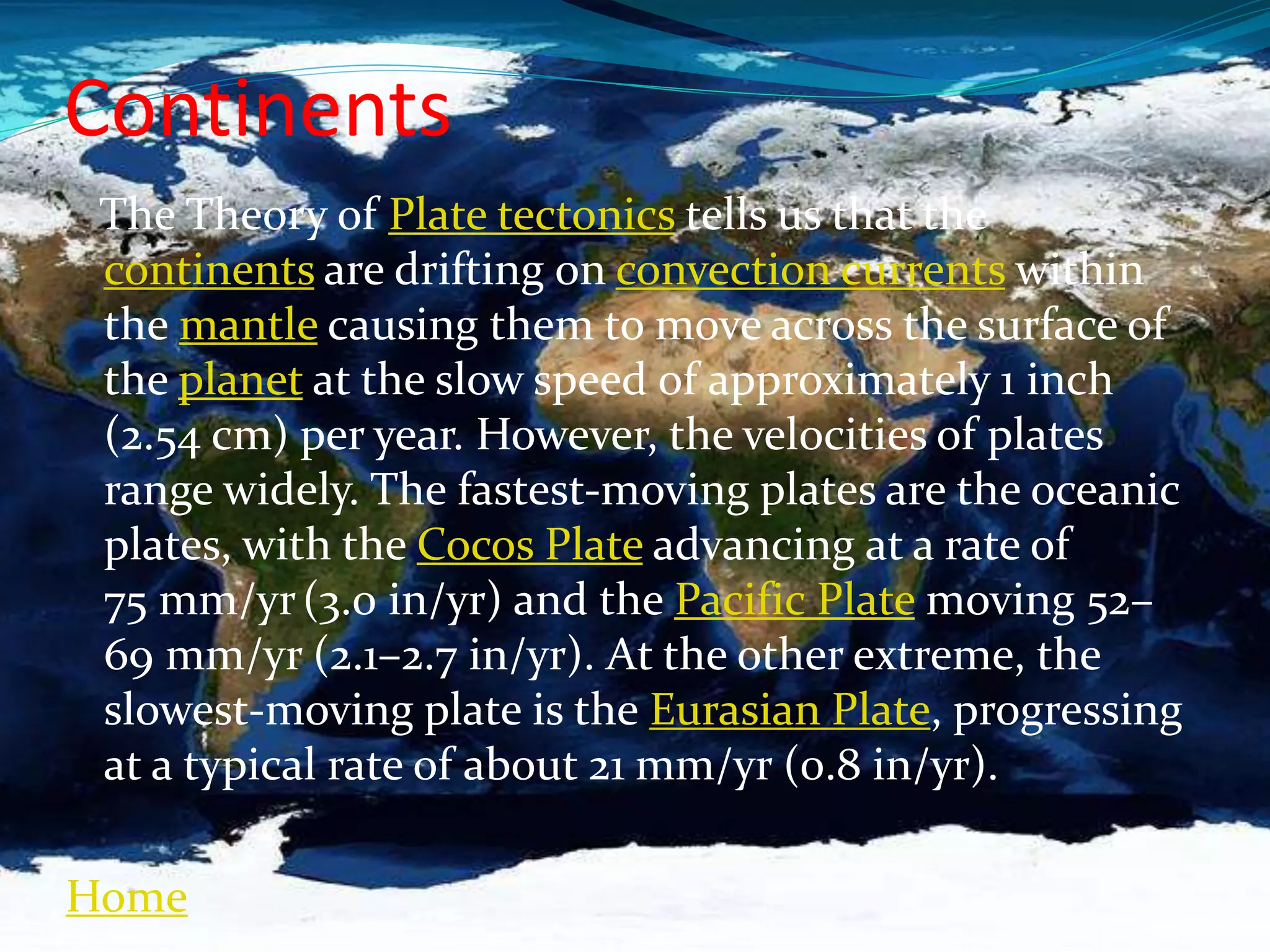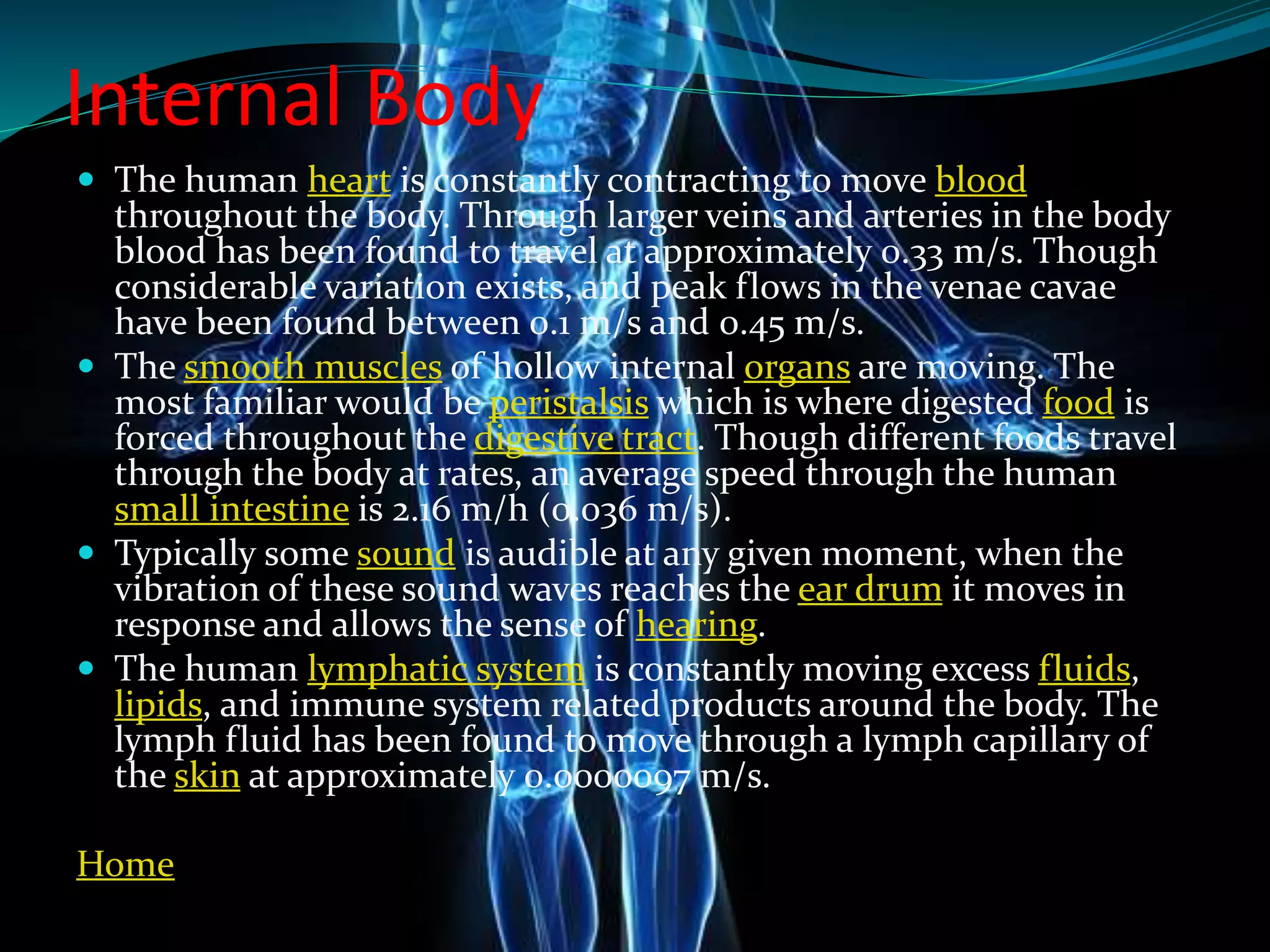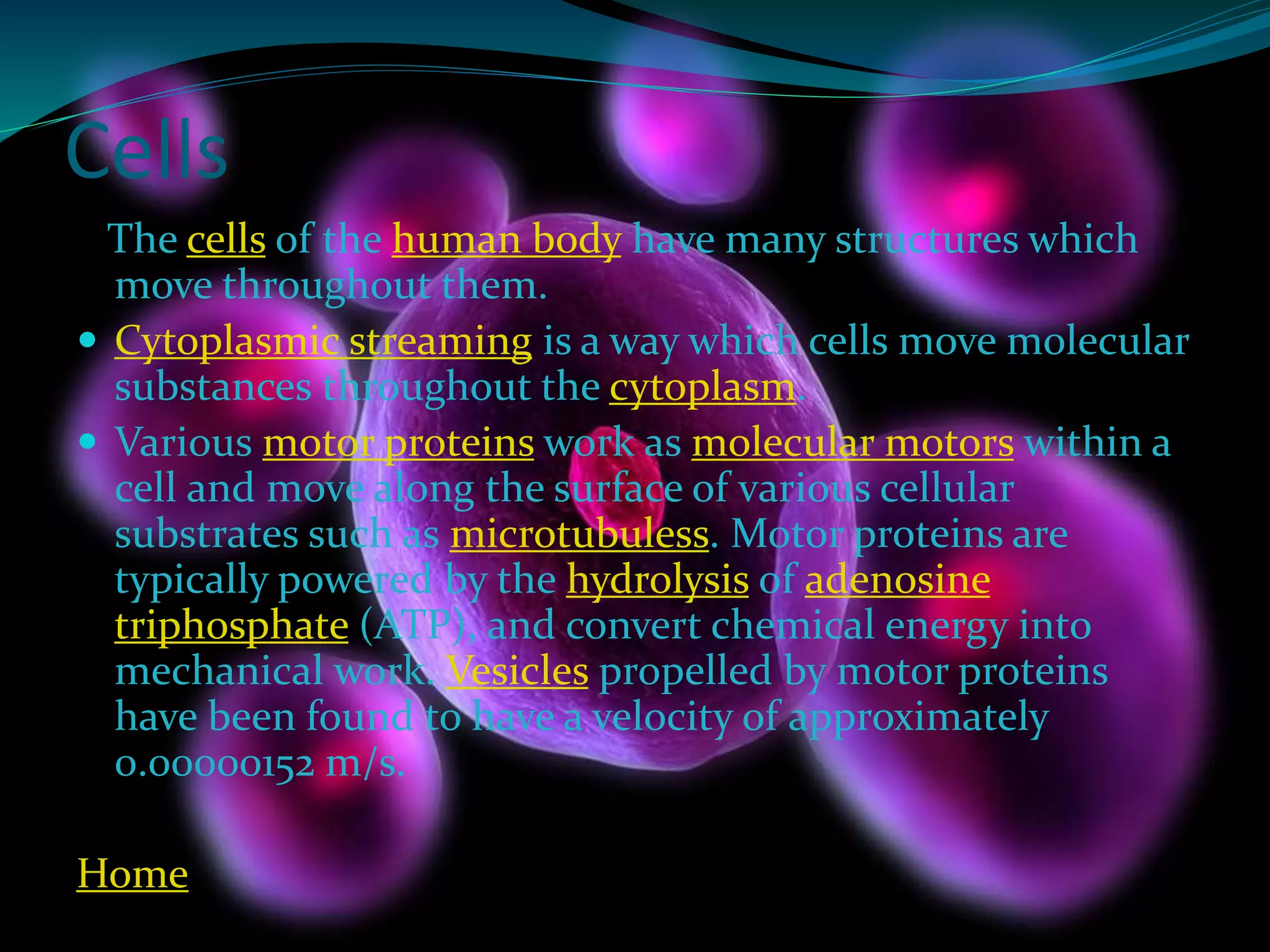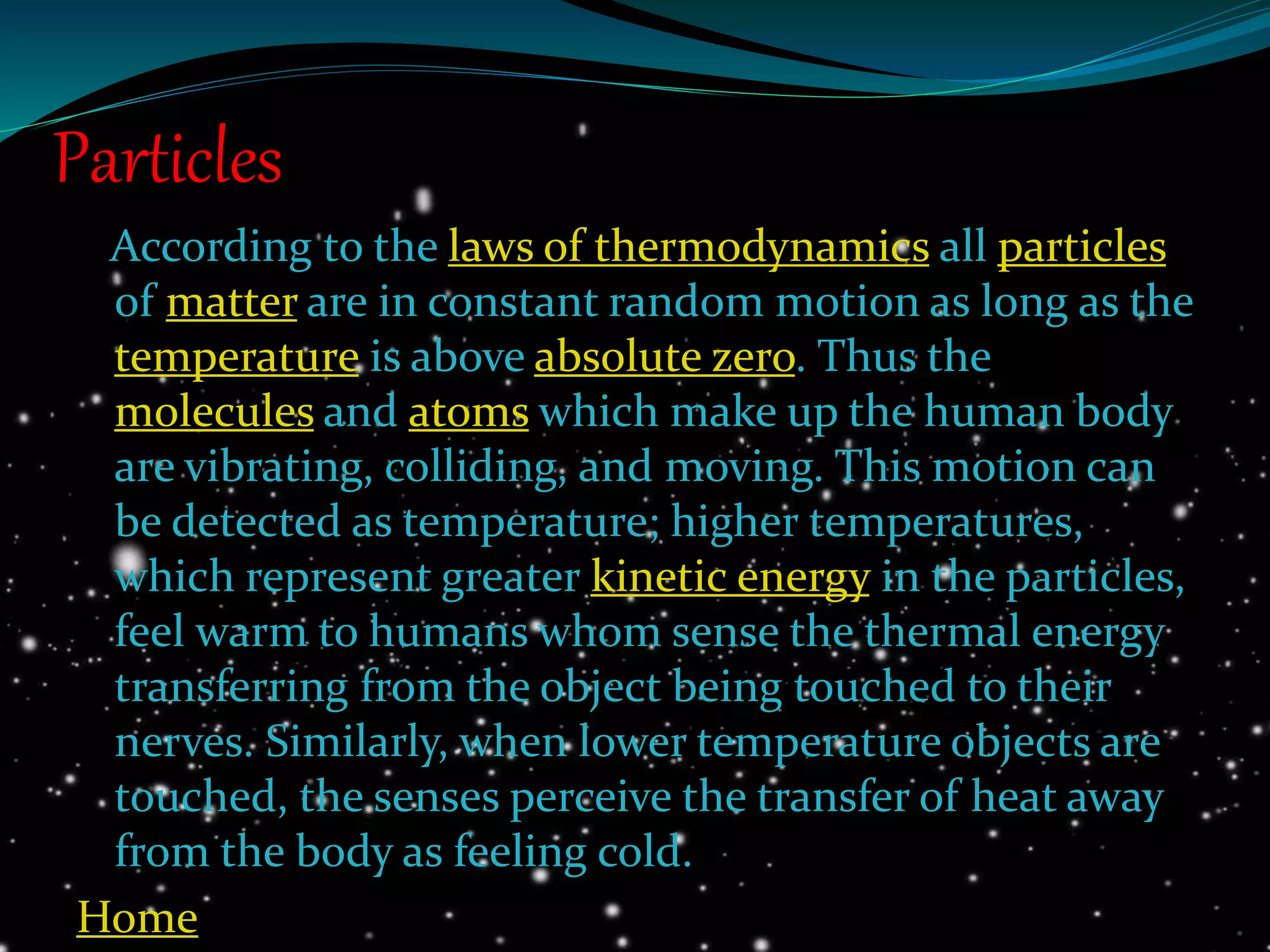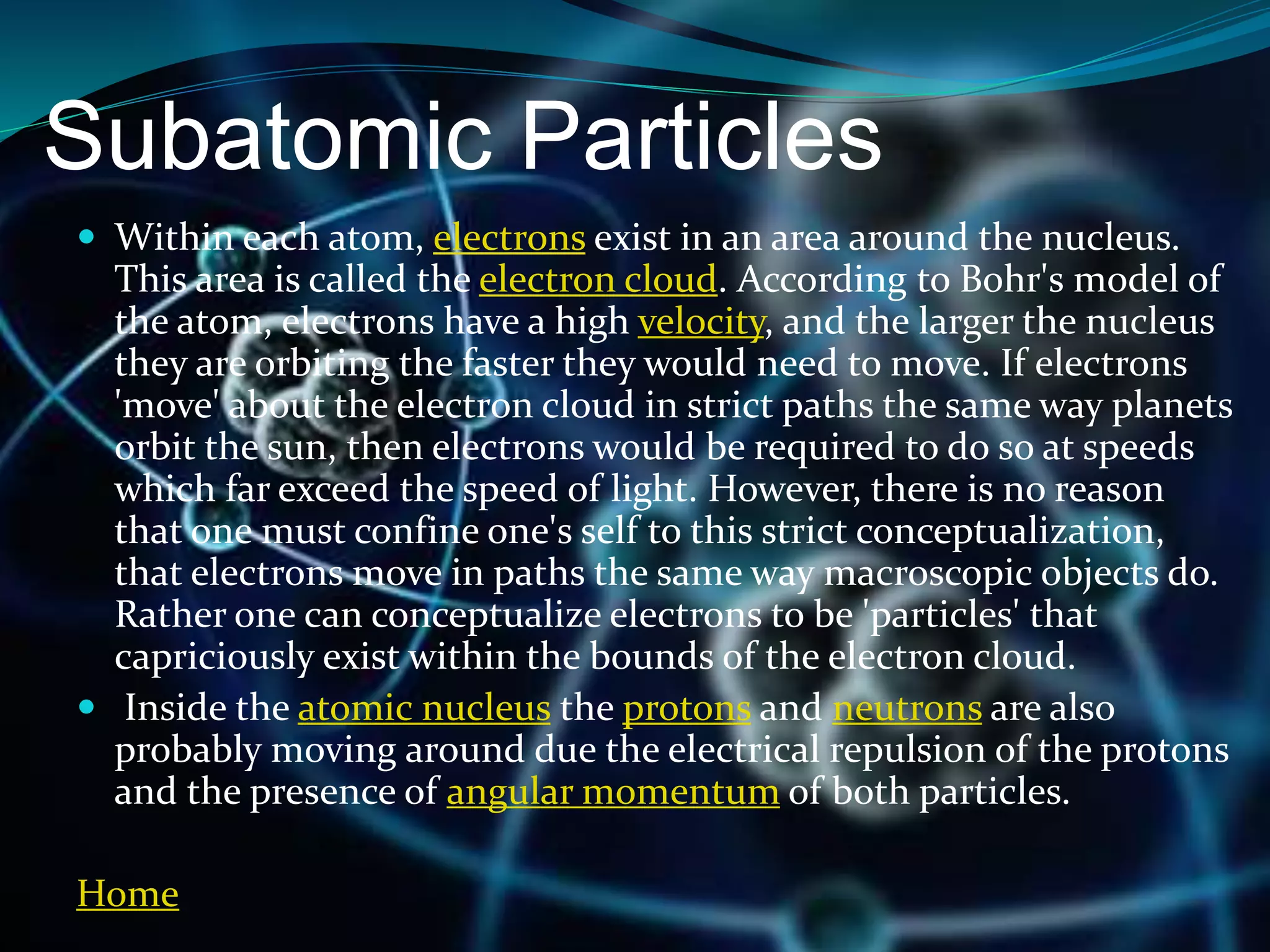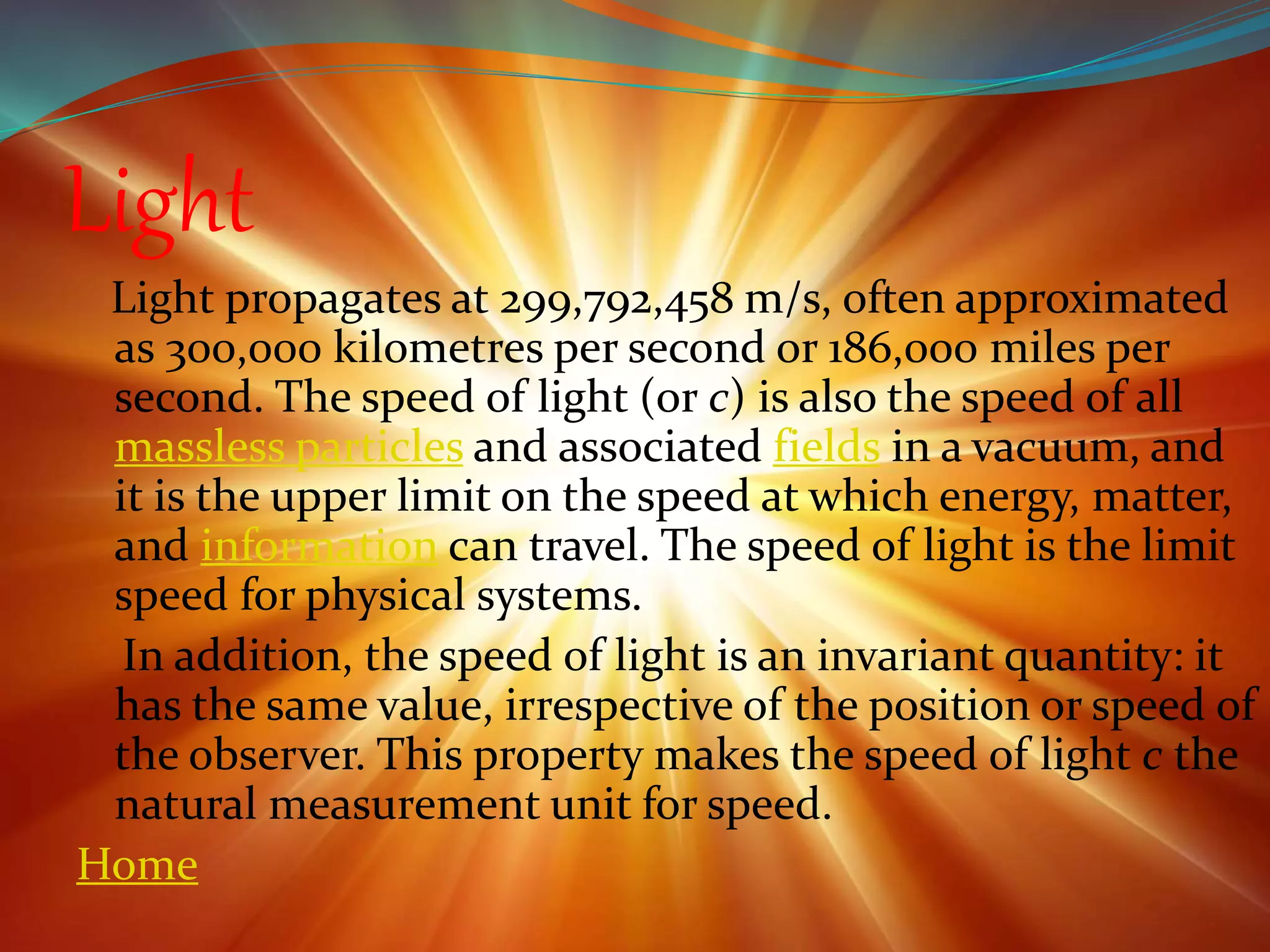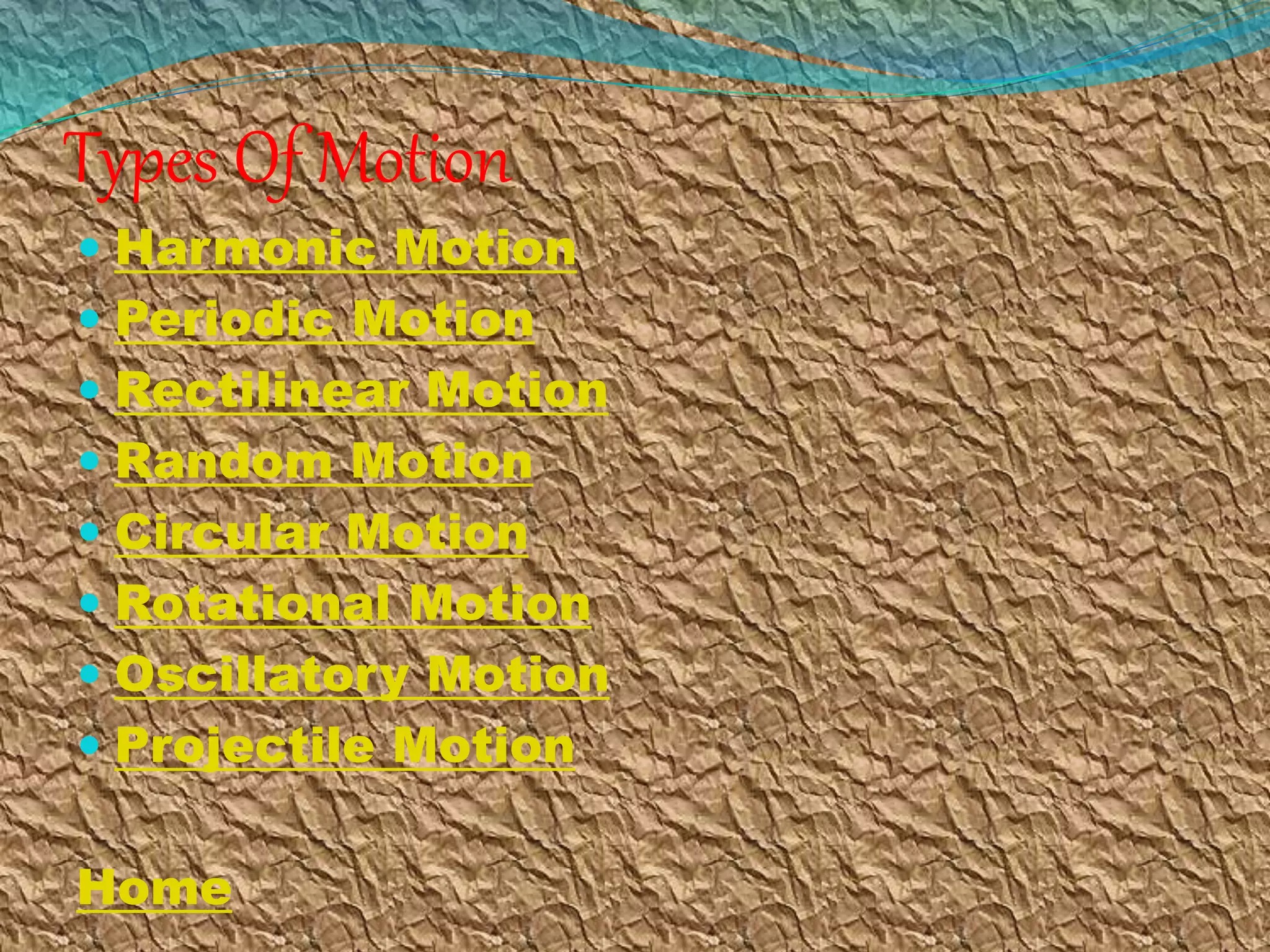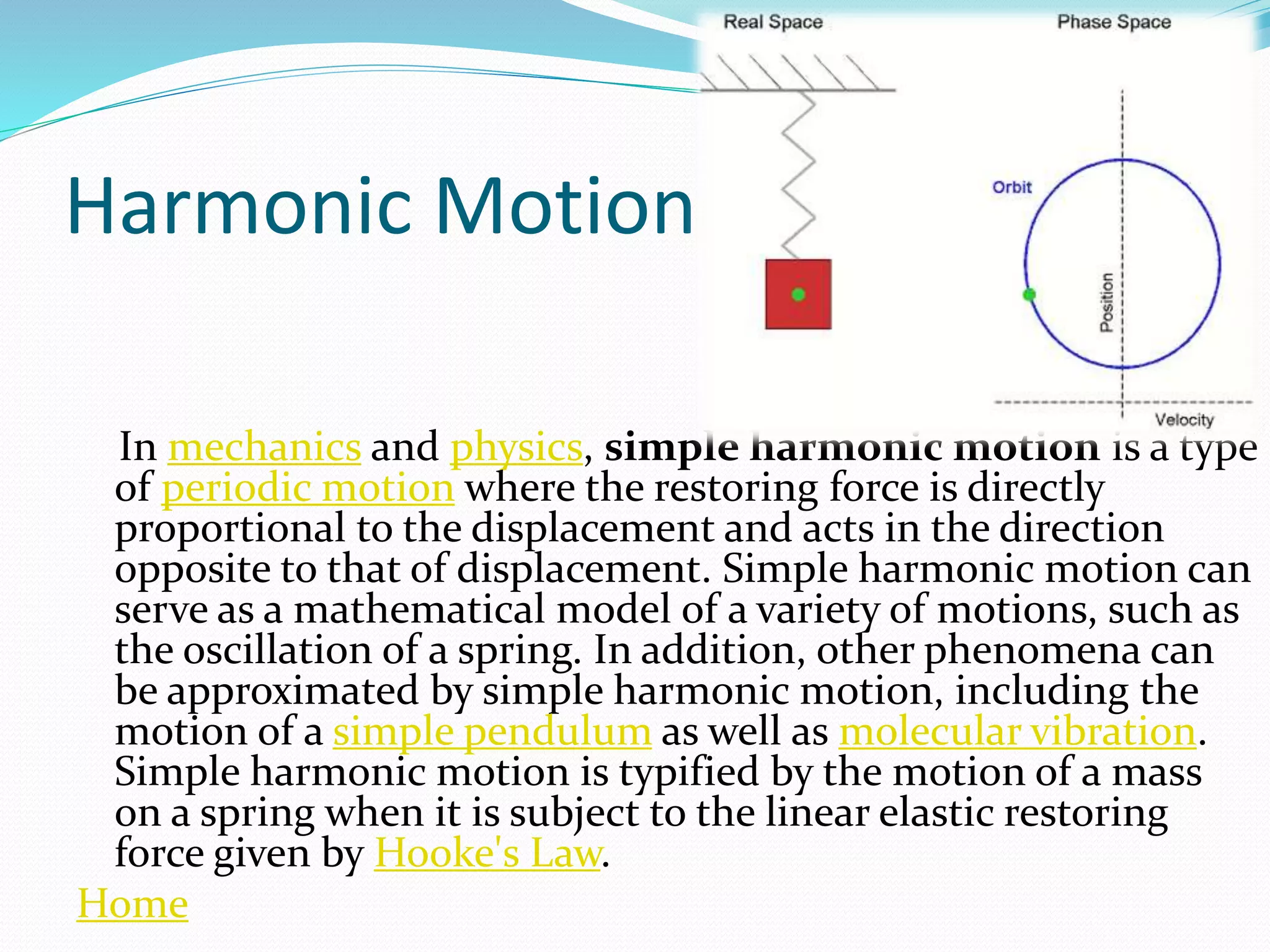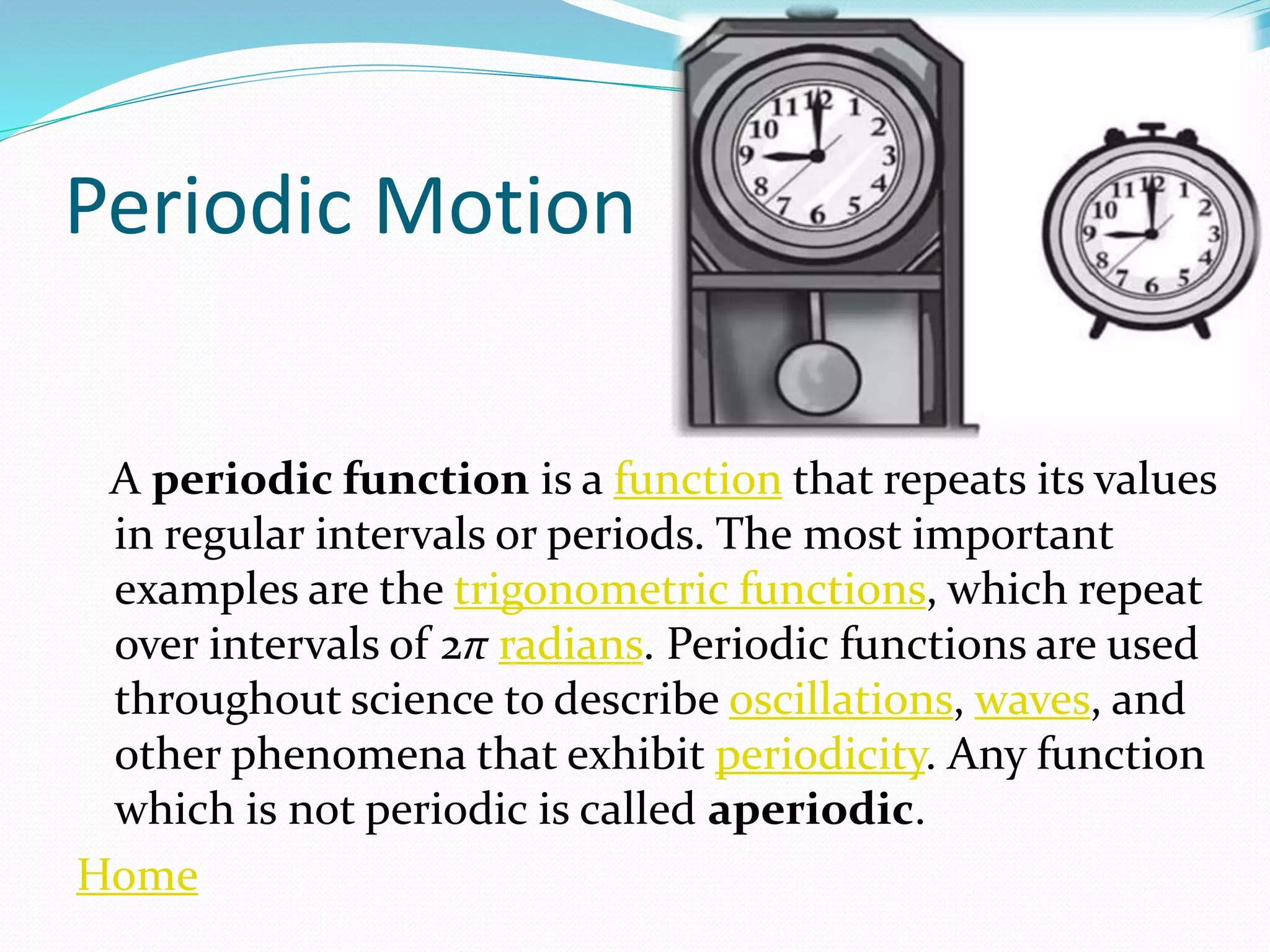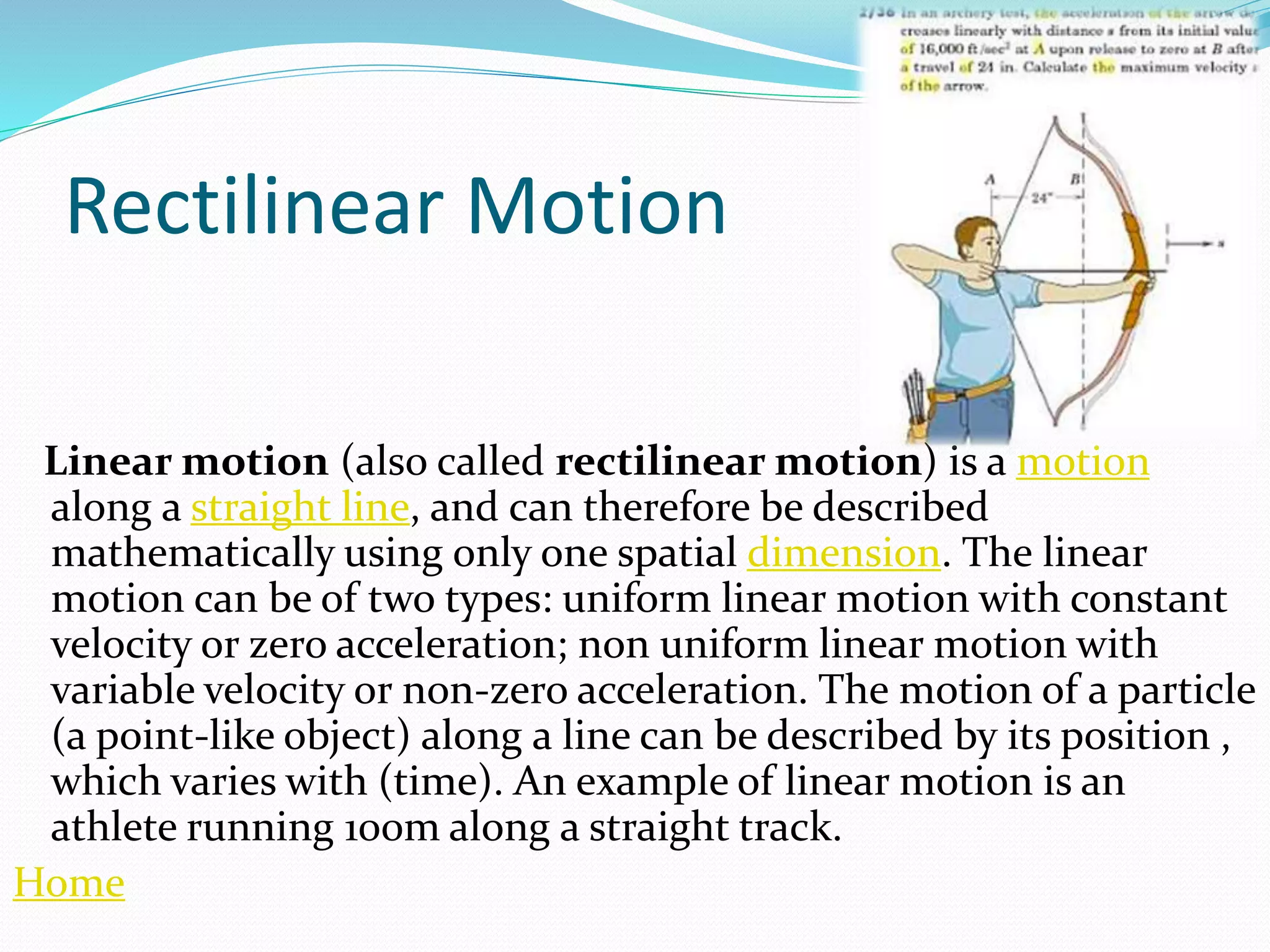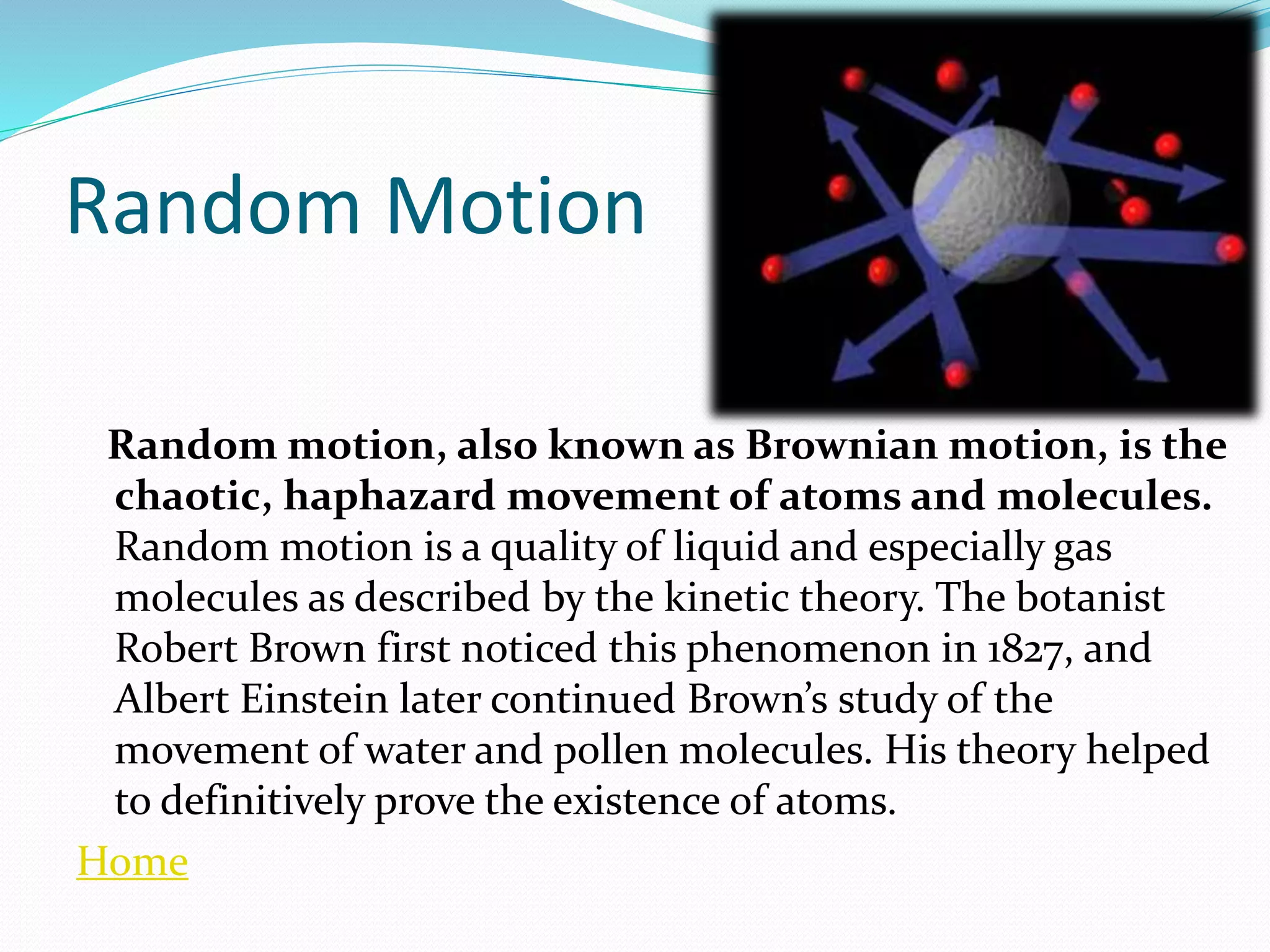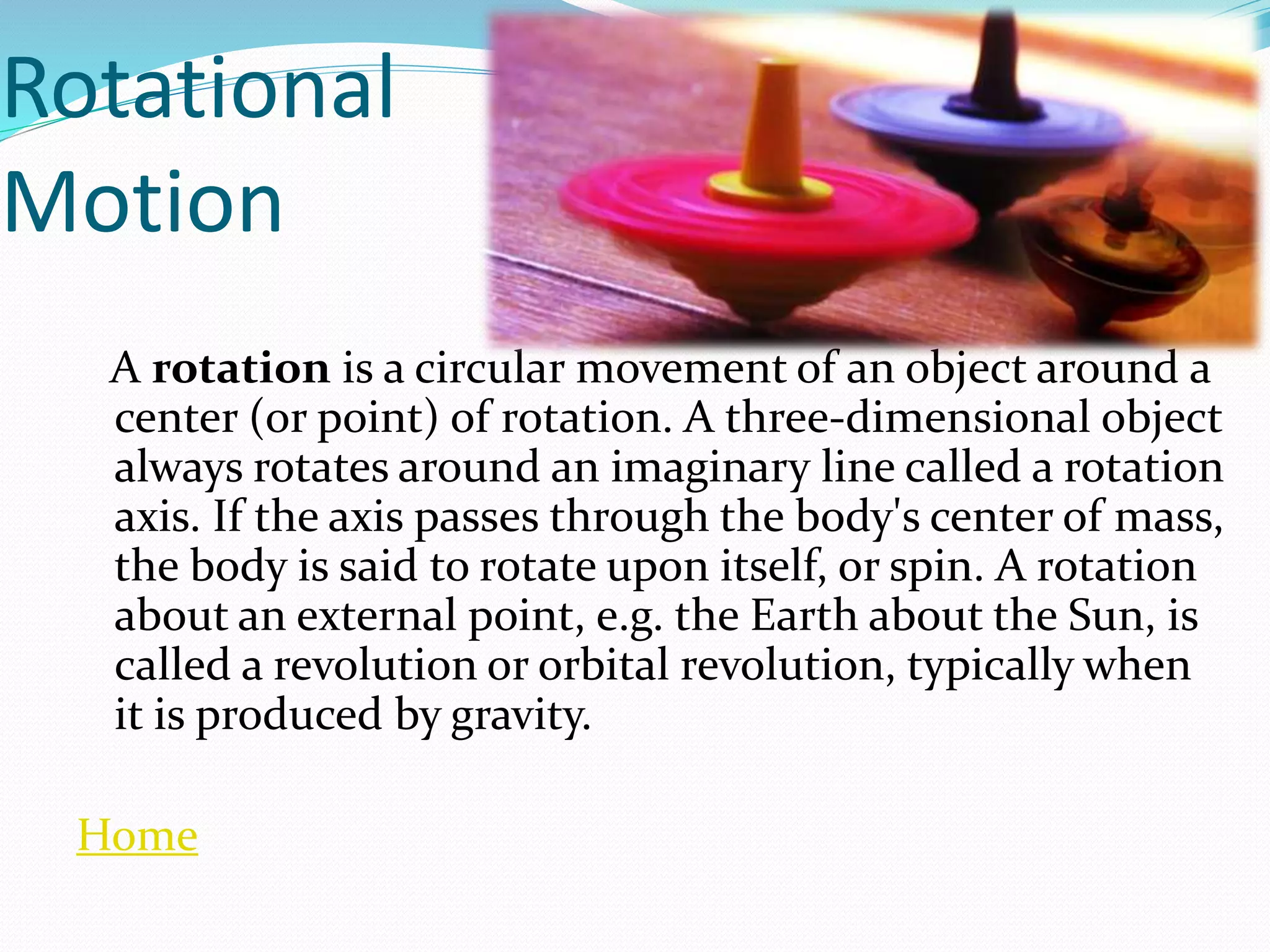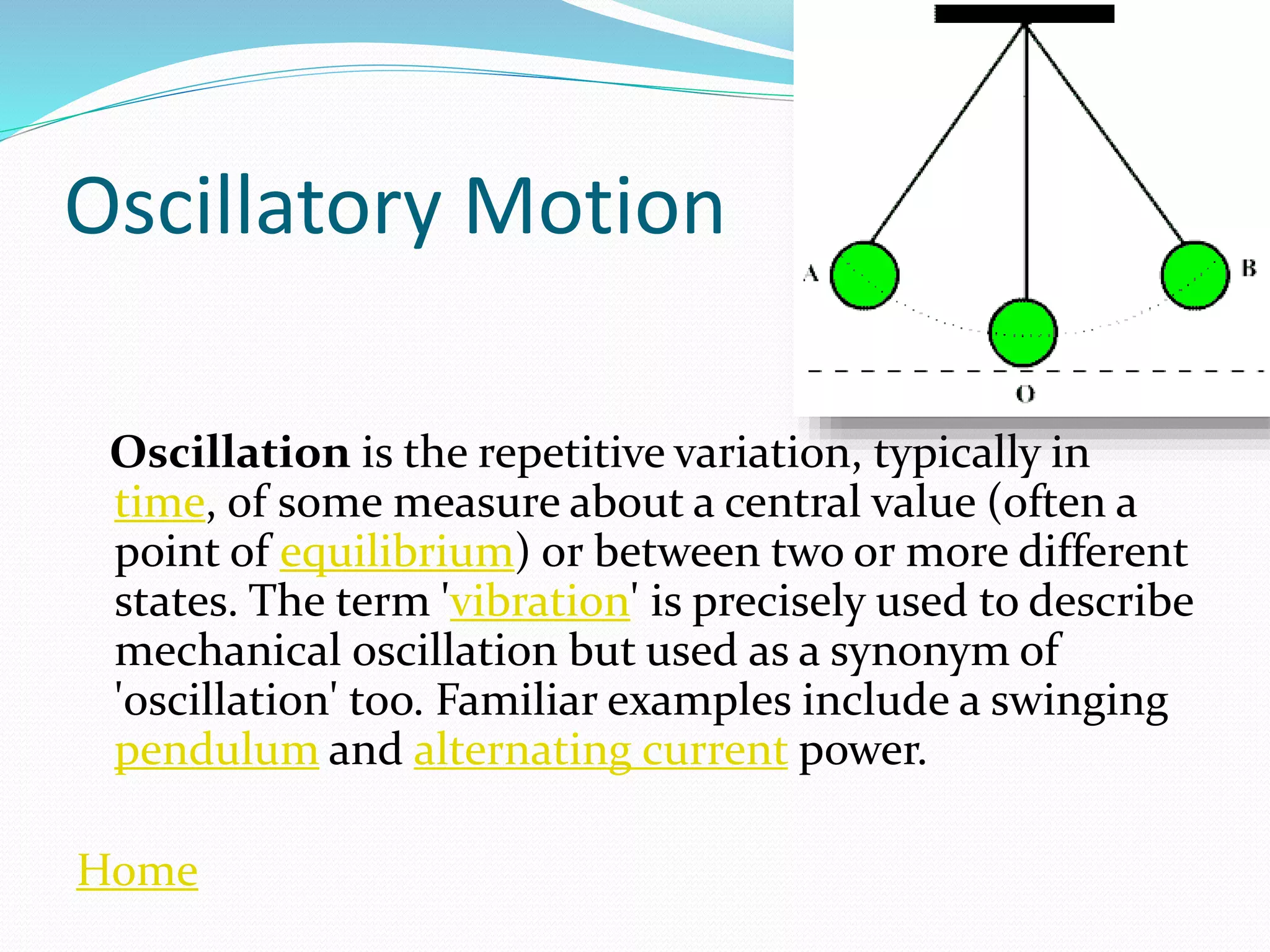The document is a science project on the topic of motion. It contains sections that define and describe different types of motion including: laws of motion, imperceptible human motions, motion of celestial bodies like the universe, galaxy, sun and solar system, earth, continents and internal human body parts. It also discusses motion at microscopic levels like cells, particles and subatomic particles. Other types of motion defined include harmonic motion, periodic motion, rectilinear motion, random motion, circular motion, rotational motion, oscillatory motion and projectile motion. The document was created by Bhumika Singh, a 9th grade science student.

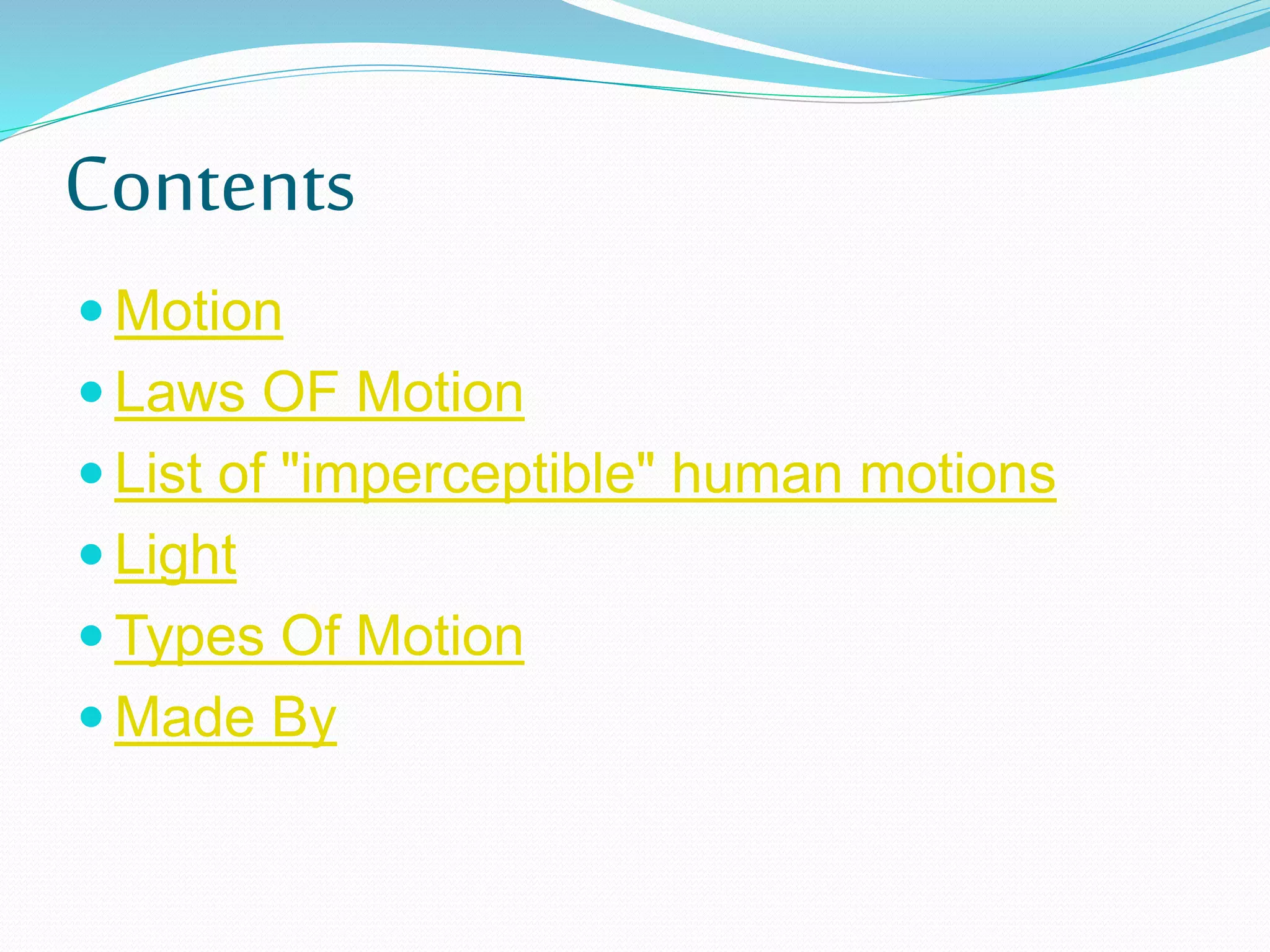
![Motion
In physics, motion is a change in position of an object with
respect to time. Motion is typically described in terms of
displacement, distance (scalar), velocity, acceleration, time and
speed.[1] Motion of a body is observed by attaching a frame of
reference to an observer and measuring the change in position of
the body relative to that frame.
If the position of a body is not changing with the time with
respect to a given frame of reference the body is said to be at rest,
motionless, immobile, stationary, or to have constant (time-
invariant) position. An object' s motion cannot change unless it
is actedpon by a force, as described by Newton's first law.
Momentum is a quantity which is used for measuring motion of
an object. An object's momentum is directly related to the
object's mass and velocity, and the total momentum of all
objects in an isolated system (one not affected by external
forces) does not change with time, as described by the law of
conservation of momentum.
Home](https://image.slidesharecdn.com/bhumikascienceppt-150624062151-lva1-app6891/75/Science-Presentation-on-Motion-3-2048.jpg)
